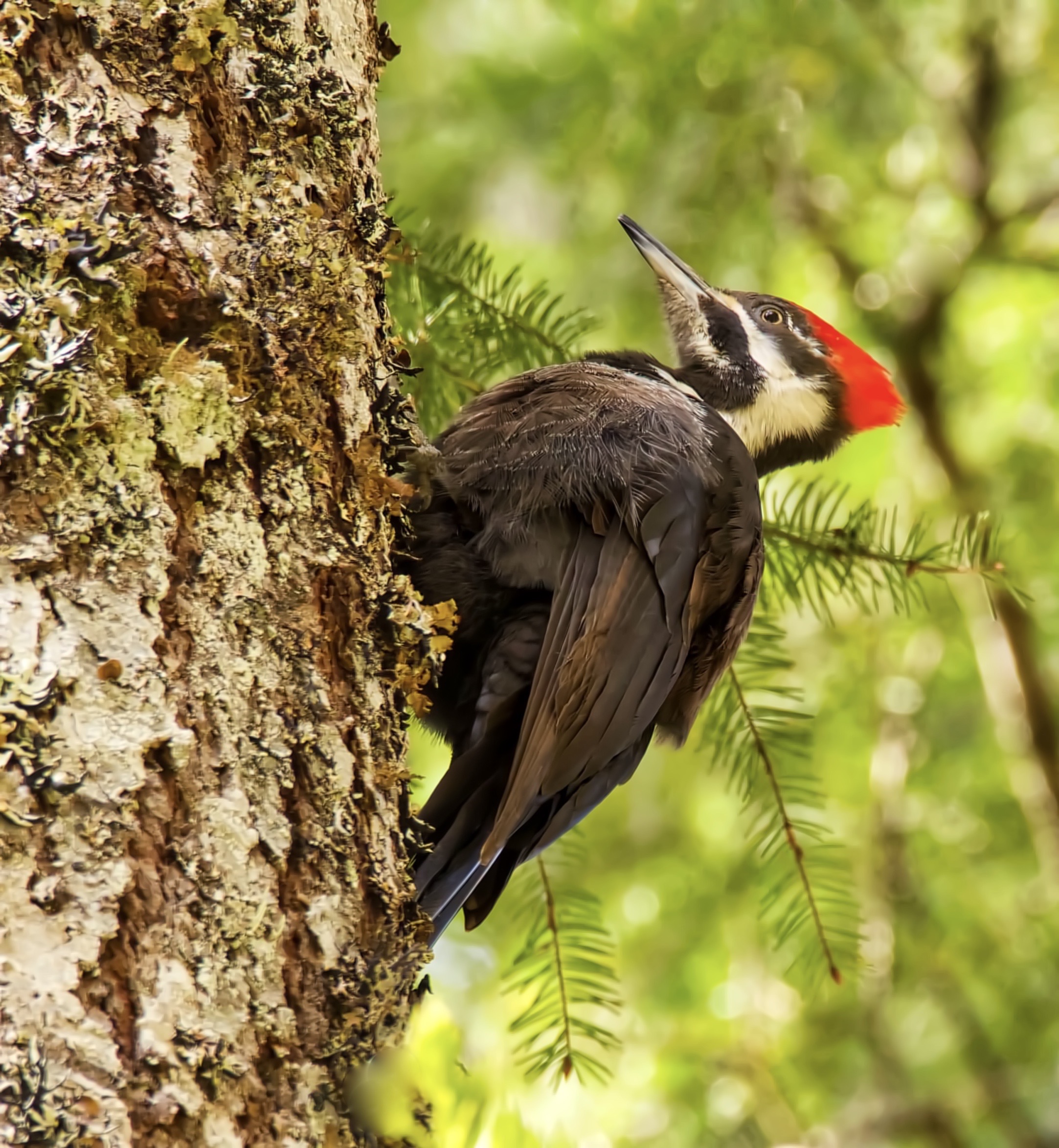The Pileated Woodpecker has other adaptations as well, such as eyes with limited movement. If the woodpecker opened its eyes completely while striking 15-20 times per second, its eyeballs might pop out of its head! With these precise and efficient tools, the large bird can make quite the mess. Therefore, it has developed fine feathers within the nostril that prevent dust and wood chips from entering the nasal cavity.
We know a little bit about the Pileated Woodpecker. It's a big bird that's not difficult to study. Its habit of hammering its head against old and decaying trees makes one wonder how the bird withstands such a lifestyle. That's an easy question with some difficult answers. The harder questions might be more like, “How does a woodpecker locate its food?” “How did evolution balance the development of these features and brain trauma?” “Do the birds innately have perfect form, if so, how?” There are more questions that haven't been asked than answers.
Within the adaptations of this bird lie bigger questions about nature. One might ask, what good is the bird anyway?
The pileated woodpecker has informed research about concussions and the forces that cause concussions. The pileated woodpecker was a natural model for looking at eye movement in shaken baby syndrome and pinpointing how infant's eyes were being damaged. Today, there are thousands of people marveling at the big and curious bird as it drills through a decaying beech tree in the White Mountains of New Hampshire, an ancient cypress in Florida, or a western hemlock in Washington state's Puget trough. Near that region of hemlock, researchers concluded that the Pileated Woodpecker is a keystone species, meaning it is an uncommon species functionally linked to the survival of a suite of other species. Pileated Woodpeckers play a keystone role in organizing the old to mid-successional forests where they inhabit. At least twenty species can occupy a Pileated Woodpecker's cavity, including: wood duck, kestrel, saw-whet owl, big brown bat, fisher, and marten. The birds accelerate woody decomposition and nutrient cycling; they control insect outbreaks and modify the behavior of insects; they change the thermal properties of wood and open up overwintering insects to desiccation.
These are remarkable animals. Remarkable in their own right, but also remarkable for what humans can learn from them. Biomimicry—the imitation of models, systems, or elements of nature to solve complex human problems—is a fascinating field and provides a strong argument for the conservation of the world's biodiversity. A cure for cancer in the tropics is often tossed around, but there are animals, plants, and ecosystems here on the southeast glacial plains, organisms of which we know very little and of which we could learn very much. Aldo Leopold said “who but a fool would discard seemingly useless parts? To keep every cog and wheel is the first precaution of intelligent tinkering.”
Who but a fool could look at the earth and perpetuate only what is useful to him or her. Our entire world comes from the earth, that raw material of civilization. The earth, provider of things. But is that all? Look at the pileated woodpecker, look at anything in nature, really, and you'll also see ideas, the fabric of humanity. Recognize nature as an idea and you might reap its ideas—a sustainable vessel of creativity.
You might be able to find a pileated woodpecker in Faville Woods this winter. If not the bird, then certainly its large excavations on dying trees.
Written by Drew Harry, Faville Grove Land Steward
Photo by Photo by Nicole Beaulac, Flickr Creative Commons









